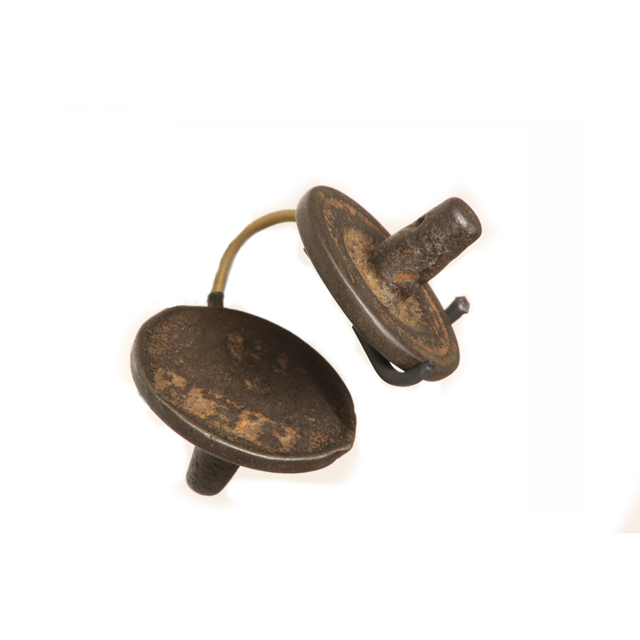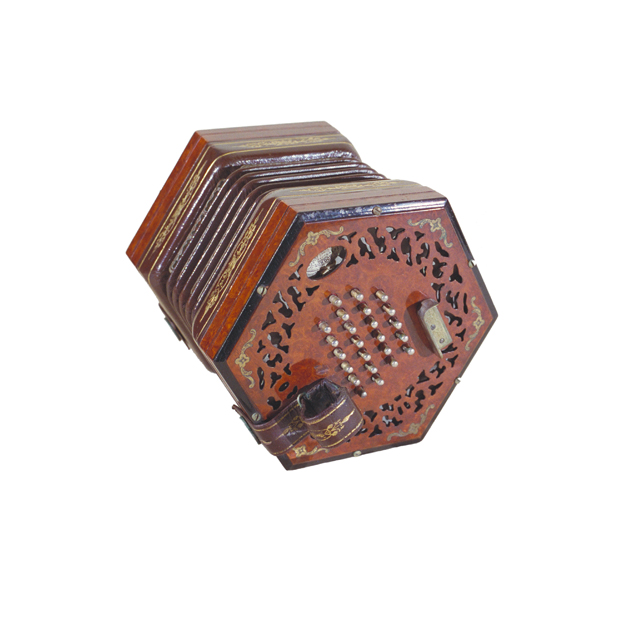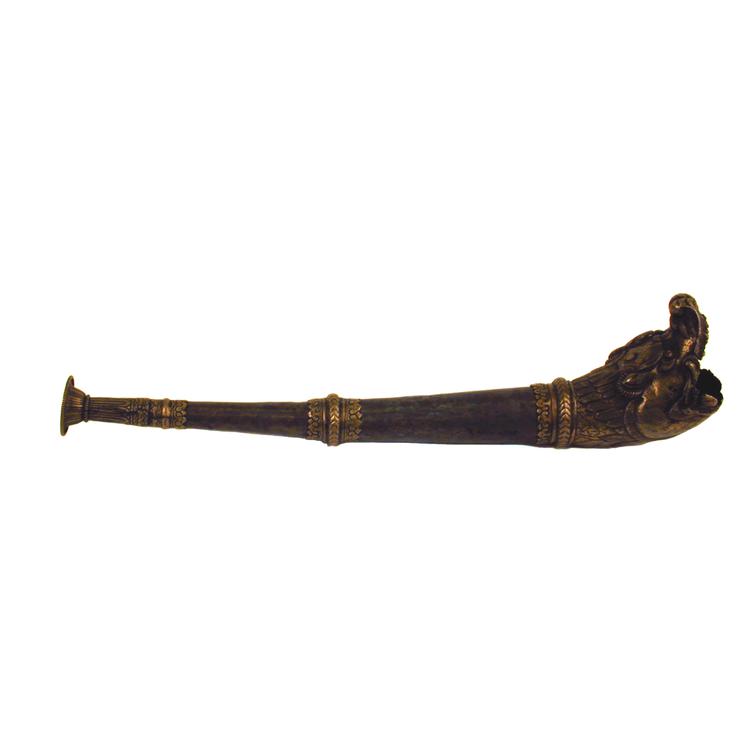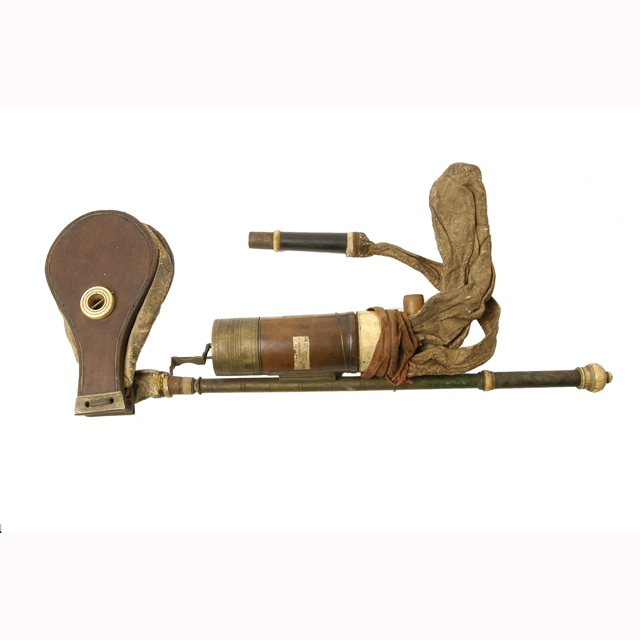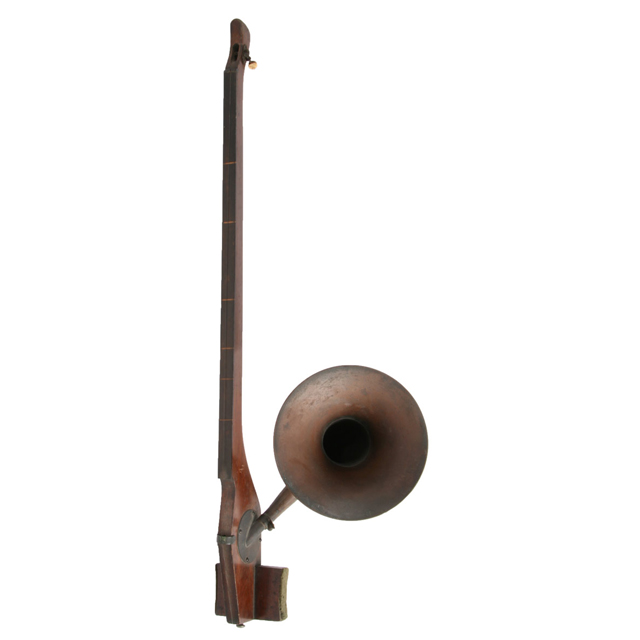
Phonofiddle, with single string, hardwood neck and fretted ebony fingerboard. The copper amplifying horn is attached to the lower end of the instrument and green felt knee pads are attached to its sides to enable it to be held between the legs like a cello. On the base is a round, cream coloured plastic plaque with the inscription: TRADEMARK PHONO-FIDDLE REG:NO:28799L; and Howson's signature.
Up until the 1920s, music was recorded by playing or singing towards a large horn. This method worked well for wind instruments, but the quieter, less directional sound of the strings was lost. Around 1900, this problem was solved by Augustus Stroh, a German engineer who had worked under Charles Wheatstone. Stroh's violin had an amplifying horn, ensuring a louder, more directional sound. The Phono-fiddle is a version of Stroh's concept invented by Arthur Howson.



